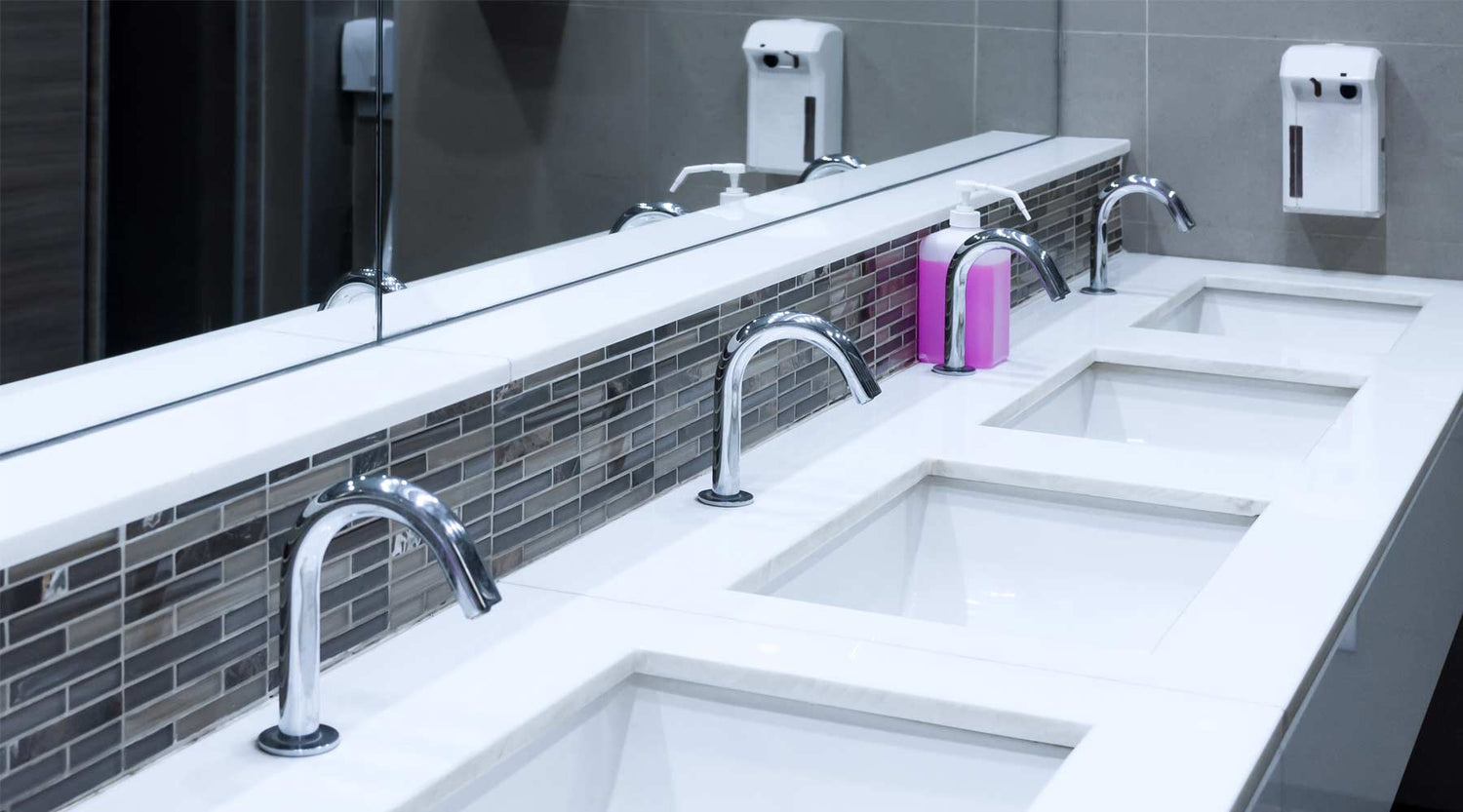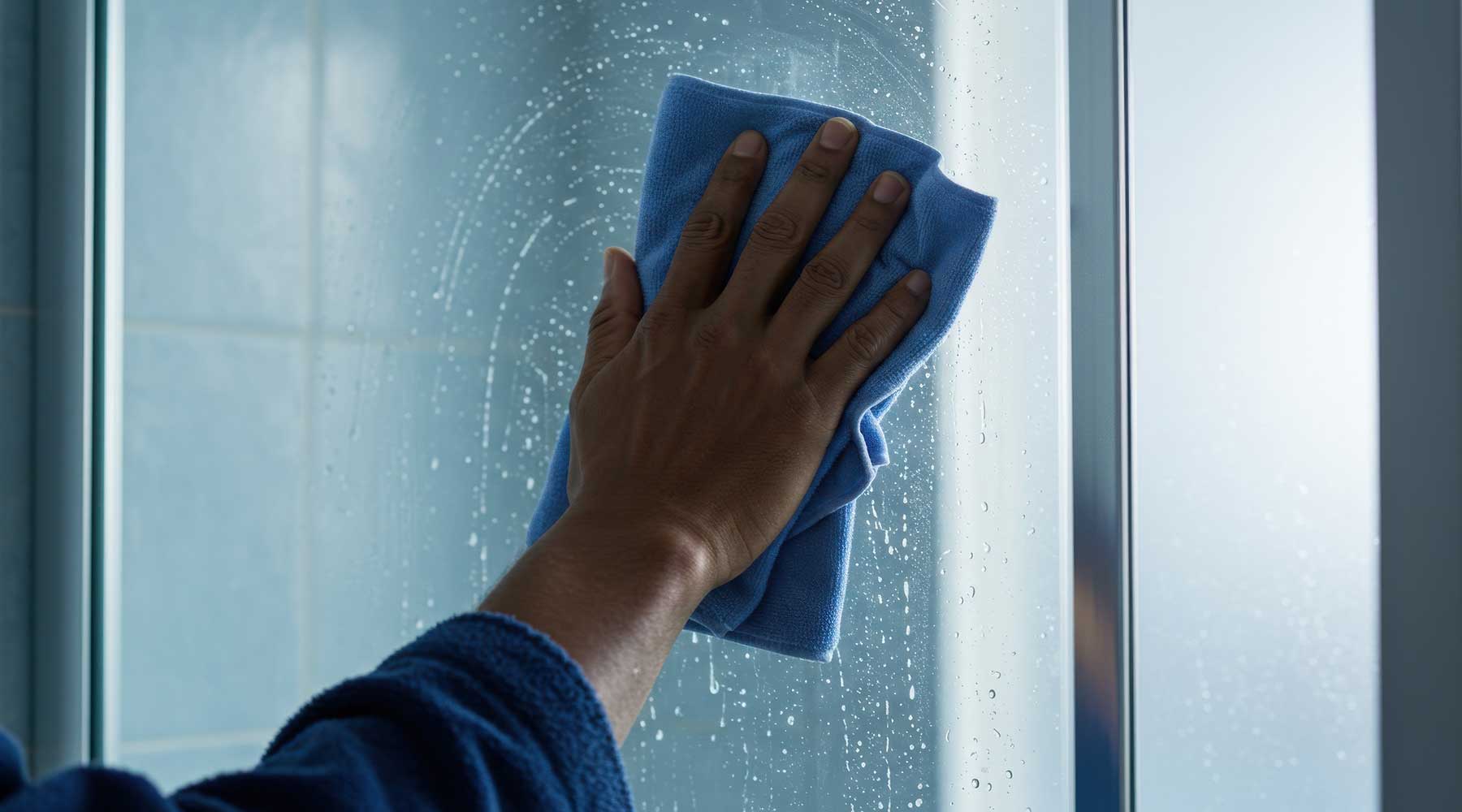How to Get Rid of Soap Scum on Glass, Tiles, and Steel Fixtures
Soap scum is one of the most stubborn and unsightly issues in bathrooms and kitchens. It builds up on glass shower doors, tiles, and steel fixtures, leaving a dull, filmy residue that seems impossible to remove.
Whether you’re dealing with a minor buildup or years of neglect, this guide will help you restore the shine to your surfaces while incorporating porcelain restoration techniques for a more polished look.
What Causes Soap Scum?
Soap scum forms when soap combines with hard water minerals, creating a sticky residue that clings to surfaces. Over time, it can trap dirt, bacteria, and mold, making cleaning more challenging. To effectively combat soap scum, it's essential to use the proper cleaning methods and preventive measures.
How to Remove Soap Scum from Glass Surfaces
Glass shower doors and mirrors are notorious for collecting soap scum, leaving them looking cloudy and dull. Here’s how to clean them effectively:
Method 1: Vinegar and Baking Soda
- Mix equal parts white vinegar and warm water in a spray bottle
- Spray the solution onto the glass and let it sit for 5-10 minutes
- Sprinkle baking soda onto a sponge or cloth and scrub in circular motions
- Rinse with warm water and dry with a microfiber cloth to prevent streaks
Method 2: Restoration Powder™
For heavy soap scum buildup, use DFI’s Restoration Powder™—available. This professional-grade solution effectively removes stubborn residue and restores the clarity of your glass surfaces.
How to Remove Soap Scum from Tiles
Bathroom tiles, especially in showers, are prone to soap scum accumulation. Here’s how to keep them clean:
Method 1: Lemon Juice and Salt
- Cut a lemon in half and sprinkle salt on the cut side
- Scrub the tiles with the lemon to break down soap scum
- Rinse with warm water and dry with a clean cloth
Method 2: Tile & Granite Defender™ Kit
Use DFI’s Tile Granite and Defender™ Kit to clean and maintain tiles, reducing soap scum buildup while enhancing the surface’s durability and shine.
How to Remove Soap Scum from Steel Fixtures
Soap scum can make steel fixtures look dull and tarnished. To restore their shine, try these methods:
Method 1: Vinegar and Dish Soap
- Mix equal parts vinegar and dish soap in a bowl
- Dip a cloth into the mixture and scrub the fixtures
- Rinse with water and polish with a dry cloth
Method 2: Stainless/Metal Cleaner & Protectant
DFI's Stainless Steel Cleaner and Protectant cleans and protects steel (stainless, bronze, aluminum, and other metal) fixtures. It repels water, soap, and grime to help metals stay cleaner and protected for a longer time. Additionally, it removes fingerprints and enhances the appearance of stainless steel, chrome, and other metal surfaces.
How to Prevent Soap Scum Buildup From the Onset
To reduce soap scum accumulation, follow these simple tips:
- Use liquid soap instead of bar soap to minimize residue.
- Wipe down surfaces with a squeegee or microfiber cloth after each shower
- Apply a protective coating, like DFI’s Clear-Fusion™ V, to glass and tile surfaces to prevent buildup and make cleaning easier. It effectively guards against hard water stains, soap scum, and other contaminants by reducing cleaning time and the need for chemical cleaners.

Restore Your Surfaces with DFI!
Regular cleaning and maintenance can prevent soap scum from becoming a significant issue. For a long-term solution, consider using the products from shopdfi.com to protect and maintain your glass, tile, and steel surfaces.
By following these cleaning and maintenance tips, you can keep your bathroom and kitchen looking pristine while extending the life of your surfaces.





Leave a comment
This site is protected by hCaptcha and the hCaptcha Privacy Policy and Terms of Service apply.